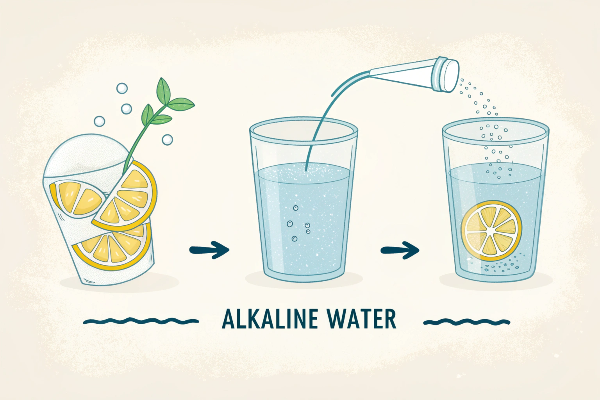Feeling lost in the world of metals, unsure of their history and uses? You’re not alone, many people are unaware of the fascinating stories behind common elements.
Titanium was discovered in 1791 by William Gregor, an English clergyman and amateur chemist. He found it in a black, sandy mineral called ilmenite. 1

But the discovery was just the beginning of the titanium story, and its journey from a curiosity to a crucial material is a captivating one. Let’s follow the milestones!
When Was Titanium First Used?
Struggling to understand when titanium went from a scientific novelty to a practical material? It wasn’t immediate, the metal’s strong properties were hard to access.
It wasn’t until 1910 that Matthew A. Hunter2, an American metallurgist, produced the first relatively pure sample of titanium metal. This opened the door to explore its use. 3

From Lab to Industry: The Kroll Process
Even with Hunter’s success, producing titanium remained a difficult, expensive challenge. It took another few decades before large-scale production became possible.
The turning point was developing a way to use titanium.
- The Problem: Titanium’s strong affinity for oxygen and other elements made it incredibly difficult to isolate in a pure, usable form.
- The Solution: In the 1930s, William J. Kroll, a Luxembourgish metallurgist, developed a process that involved reducing titanium tetrachloride4 with magnesium.
- The Impact: The Kroll process5, though complex and expensive, finally made commercial titanium production a reality.
| Aspect | Description |
|---|---|
| Discovery | Found in ilmenite by William Gregor in 1791. |
| Isolation | First relatively pure sample produced by Matthew A. Hunter in 1910. |
| Commercialization | Made possible by the Kroll process, developed by William J. Kroll in the 1930s, enabling large-scale production. |
| Initial Challenges | Difficulty in isolating pure titanium due to its strong reactivity with oxygen and other elements. |
| Modern Production | Still relies on the Kroll process or variations of it, although research continues on more efficient and cost-effective methods. |
Who Used Titanium First?
Confused about who first embraced this newly available, strong, and lightweight metal? It’s natural to wonder who pioneered its application.
The initial applications of titanium were primarily in the military and aerospace industries, due to its exceptional strength-to-weight ratio1 and corrosion resistance. 6

Breaking Down Early Adoption
The unique properties of titanium immediately caught the attention of industries where performance was critical, even at a high cost.
- Military Aircraft: Titanium’s ability to withstand extreme temperatures and stresses made it ideal for jet engines and airframes.
- Aerospace: The space race further fueled demand, as titanium’s lightness and strength were crucial for rockets and spacecraft.
- Submarines: High resistance to sea corrosion.
- Other Early Uses: While less widespread, titanium also found niche applications in chemical processing equipment and even some early medical implants7.
| Industry | Reason for Early Adoption |
|---|---|
| Military | High strength-to-weight ratio, corrosion resistance, and ability to withstand extreme temperatures made it perfect for aircraft. |
| Aerospace | Lightness and strength were critical for rockets and spacecraft, essential for the space race. |
| Other | Chemical processing, medical implants. |
Where Is 100% Pure Titanium Used?
Wondering where you might encounter titanium in its purest form? The applications are more specialized than you might think.
100% pure titanium is rarely used. Most applications use titanium alloys, which combine titanium with other elements to enhance specific properties. 8

The Reality of "Pure" Titanium
While the term "100% pure" sounds impressive, it’s often not the best choice for demanding applications.
- Commercially Pure (CP) Titanium9: This is the closest you’ll typically find to "pure" titanium, and it’s graded based on slight variations in composition. CP titanium is used where corrosion resistance is paramount, but extreme strength isn’t the primary concern.
- Why Alloys are Preferred: Alloying titanium with elements like aluminum, vanadium, and molybdenum dramatically improves its strength, weldability, and other characteristics.
- Niche Uses for CP Titanium: Some applications, like specific types of chemical processing equipment or certain medical implants, may utilize CP titanium for its biocompatibility and corrosion resistance10.
| Term | Description |
|---|---|
| 100% Pure Titanium | Rarely used in practice; most applications rely on titanium alloys. |
| Commercially Pure (CP) | The closest to "pure" titanium, graded by composition; used where corrosion resistance is key, but high strength is not the primary need. |
| Titanium Alloys11 | Preferred for most uses, combining titanium with other elements to improve strength, weldability, etc. |
Why Is Titanium So Rare?
Do you think that titanium’s high cost means it must be incredibly scarce? The truth might surprise you. It’s not a supply issue, it’s a production problem.
Titanium is not rare in the Earth’s crust; it’s the ninth most abundant element. The high cost is due to the difficulty and energy required to extract and process it. 12

The Cost Factor: Extraction, Not Scarcity
The price of titanium reflects the challenges of turning its readily available ores into usable metal.
- Abundant Ores: Titanium is commonly found in minerals like ilmenite and rutile, which are widely distributed.
- The Kroll Process (Again!): This multi-stage process, which involves high temperatures and reactive chemicals, is energy-intensive and complex.
- The Sponge Problem: The Kroll process produces a porous form of titanium called "sponge," which requires further processing to become solid, usable metal.
- Machining Challenges: Even after it’s refined, titanium is notoriously difficult to machine, adding to the overall cost.
| Factor | Description |
|---|---|
| Abundance | Titanium is the ninth most abundant element in the Earth’s crust, commonly found in minerals like ilmenite and rutile. |
| Extraction Cost | High cost is due to the complex and energy-intensive Kroll process, which is required to extract titanium from its ores. |
| Processing | The Kroll process produces titanium "sponge," which needs further processing to become usable metal, adding to the expense. |
| Machining | Titanium is difficult to machine, further increasing production costs. |
Is Titanium Worth More Than Gold?
Pondering the value of titanium compared to the classic precious metal? It’s a common comparison, but the answer depends on how you define "worth."
Generally, gold is significantly more expensive per unit weight than titanium. However, titanium’s value lies in its unique properties, not its scarcity. 13

A Tale of Two Metals: Value vs. Utility
Comparing titanium and gold is like comparing apples and oranges. They serve very different purposes.
- Gold: Primarily valued as a store of wealth and for its use in jewelry and some electronics, due to its rarity, malleability, and conductivity.
- Titanium: Valued for its strength, lightness, and corrosion resistance, making it essential in industries where performance outweighs cost.
- Market Prices: The price of gold fluctuates based on market demand and investment trends. Titanium prices are more closely tied to production costs and industrial demand.
- The "Worth" Question: While gold may be more expensive, titanium is arguably more valuable in applications where its properties are irreplaceable.
| Metal | Primary Value Driver | Typical Uses |
|---|---|---|
| Gold | Rarity, store of wealth, malleability, conductivity | Jewelry, investment, electronics |
| Titanium | Strength-to-weight ratio, corrosion resistance, biocompatibility | Aerospace, military, medical implants, chemical processing, high-performance equipment |
Conclusion
Titanium’s story is one of transformation. From a mineralogical oddity to a cornerstone of modern engineering, it’s a journey that highlights human ingenuity. It remains a key material across a wide range of cutting-edge technologies.
—
-
Discover the contributions of Matthew A. Hunter to titanium metallurgy and how his work paved the way for future advancements. ↩
-
Matthew A. Hunter, 1910. ↩
-
Learn about titanium tetrachloride’s role in the Kroll process and its importance in producing titanium efficiently. ↩
-
Explore the Kroll process to understand how it revolutionized titanium production and its significance in metallurgy. ↩
-
Understanding the strength-to-weight ratio is crucial for industries like aerospace and military, where performance is paramount. ↩
-
Discovering the history of titanium in medical implants reveals its transformative impact on healthcare and patient outcomes. ↩
-
Alloys are more common. ↩
-
Explore this link to understand the unique properties and applications of CP Titanium, crucial for industries requiring corrosion resistance. ↩
-
Learn about the importance of biocompatibility and corrosion resistance in medical implants, ensuring safety and effectiveness for patients. ↩
-
Discover the advantages of Titanium Alloys, which enhance strength and weldability, making them essential in many industries. ↩
-
Ninth most abundant. ↩
-
Gold is much more expansive. ↩





